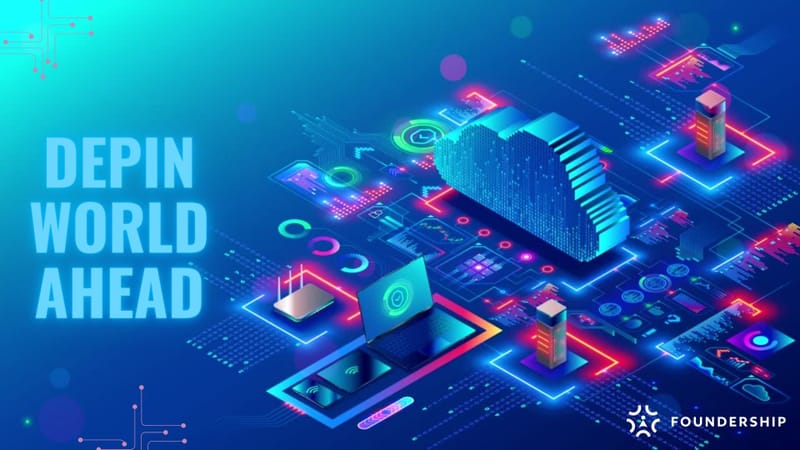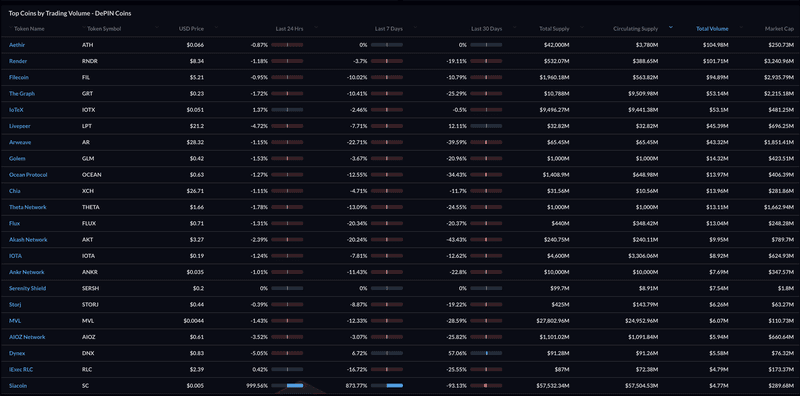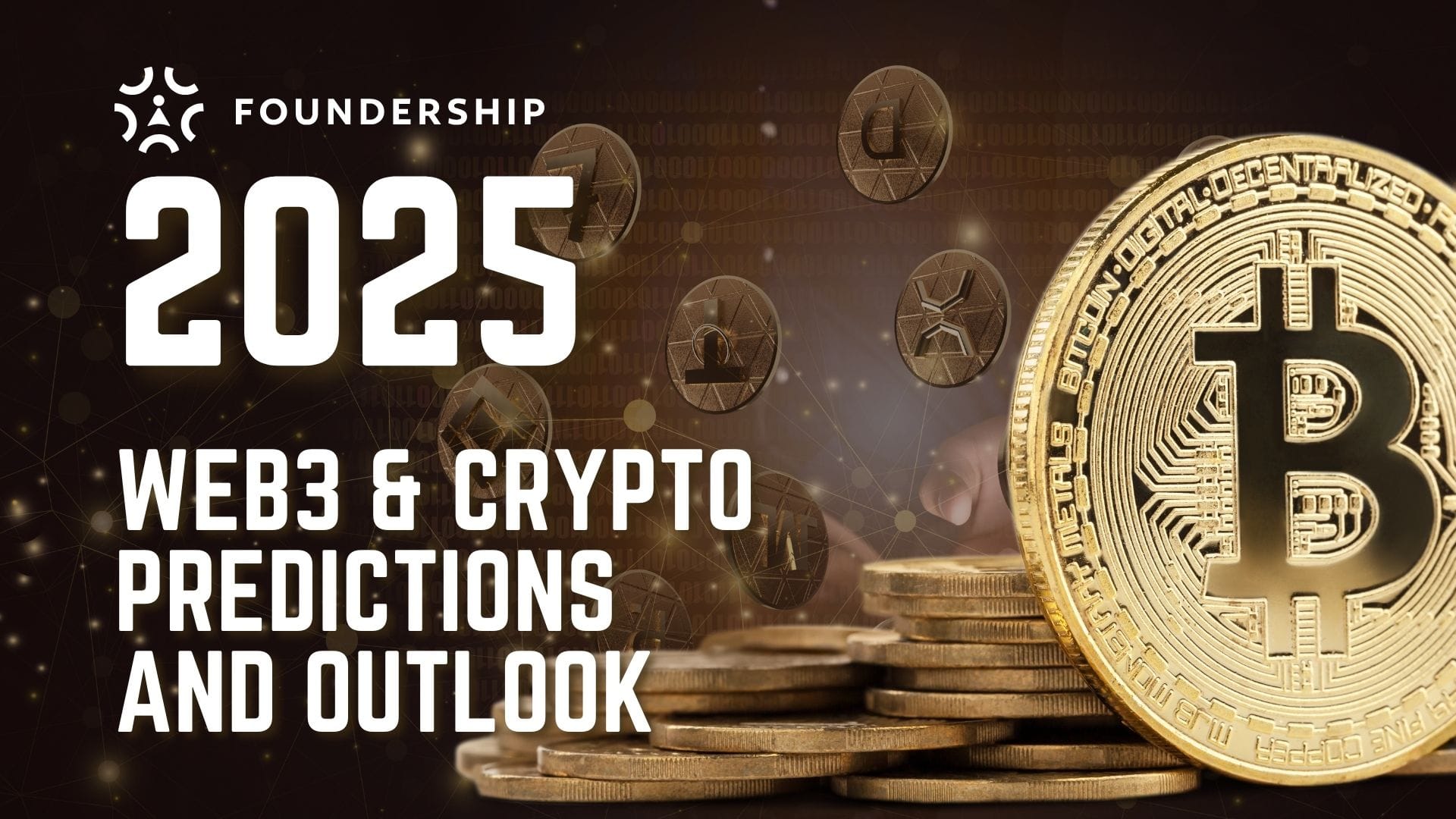DePIN is all love in the Web3 space! 💕

The DePIN:
Decentralized: Sourced from many users, verified, incentivized, but not controlled by a central entity.
Physical Infra Network
Infra: It can be anything
That's DePIN for you.
Why is DePIN Timing Now?
1. Elon thinks computing for DePIN? 👇
https://x.com/i/status/1801602674938249402
2. Cloud usage will spike like anything!
Reduced hardware costs and the scalability of cloud services have driven significant adoption of cloud computing. The market is expected to reach $947.3 billion by 2026.
3. The cost of storage has plummeted significantly.
Decreasing Storage Cost per GB: From $0.10 in 2013 to $0.015 in 2023.
4. The price-performance of GPUs, with the cost per FLOPS decreasing from $100 in 2013 to $15 in 2023.
(FLOPS: unit of measurement used to quantify the computing power of a computer or a processor)
5. AI is driving the need for computing resources and GPUs.
The demand for computing power driven by AI and machine learning has skyrocketed
6. With the proliferation of IoT devices, Edge computing has gained traction. The edge computing market is projected to grow from $3.6 billion in 2020 to $15.7 billion by 2025
7. Data centers are sitting with idle capacities: They don't know how their infra can be used in a decentralized world!
10 million physical servers globally that are currently not in use. This represents around $30 billion worth of idle capacity.
Source - A report by Anthesis Group in collaboration with Stanford University and TSO Logic
8. Data Ownership & Security Concerns
With the widespread adoption of generative AI across billions of users globally, concerns over data privacy and security have increased, driving user interest in decentralized alternatives
The convergence of all of the above is opening the greenfield for DePIN.
What are the Infrastructures so far that are getting DePIN’ized
Physical Resource / Digital Resource
- IoT Devices
- Data Storage
- Geospatial data
- Cloud Computing
- Distributed GPU rendering services
- Decentralized video streaming service
- Blockchain-based cloud computing marketplace
- Peer-to-peer networks
- Energy Grids
- Bandwidth Sharing
- Supply chain data
- Carbon offsetting
- Decentralized VPN
- Decentralized supercomputing
- decentralized machine learning computing
- WiFI
- Crowdsourced navigation maps
- Weather stations
- Earth observation data
- Decentralized Identity verification
..
..
As of 2024, the aggregate market capitalization of Decentralized Physical Infrastructure Networks (DePIN) is approximately $29 billion!
Source - https://mpost.io/Report-State-of-DePin.pdf
Top Coins by Trading Volume - DePIN Coins
Source - https://dapplooker.com/dashboard/depin-coins-dashboard-887
All this is great!
What more is needed for DePIN to go mainstream?
Scalability: Current blockchain infrastructure struggles to handle the high transaction volume and real-time data processing required by large-scale DePIN networks.
- In this bull market (2023-24), we will see amazing scalability in L1/L2s, which should also solve the needs of DePIN projects.
- Hello Monad (to achieve a high throughput of up to 10,000 transactions per second)
- Hello Eigen Layer!
- Hello Arbitrum, Optimismim and Polygon.
- Hello Solana!
There will be high scalability in the overall Blockchain space; the above highlights work done by various chains and protocols.
Consensus Mechanisms: Various DePIN projects use different consensus mechanisms (e.g., Proof of Work, Proof of Stake, Proof of SpaceTime) and hence there are compatibility challenges.
With Interoperability protocols like
- Polkadot
- Cosmos leading the way for Inter-Blockchain communication
- AggLayer by Polygon can help improve consensus mechanisms across EVM (Ethereum Virtual Machine) blockchains
- and more
Consensus compatibility challenge will get steady solutions.
Standardized APIs and middleware: Seamless interaction between different DePIN projects needs broader API frameworks (Hello Webservices in Web2 world) and Middleware (like TIBCO in Web2 world)
- With Graph Protocol for indexing and querying data from blockchains
- API3 aims to enable smart contracts to access real-world data and services through decentralized APIs
- Decentralized oracles that allow smart contracts to interact with external data sources, APIs securely
- Polygon SDK for connecting Ethereum-compatible blockchain networks
DePIN-specific DAOs? Different networks have conflicting policies and decision-making processes. Hence, this will affect the interoperability of DePIN projects. Can there be a DePIN-specific DAO framework?
Different jurisdictions have varying regulatory requirements, which can complicate cross-border interoperability.
Token Economics: Incentives aligned with one network’s token may not translate well to another network, leading to inefficient resource sharing.
Designing and maintaining an effective incentive system for network participants, such as miners or validators, often requires significant financial resources.
Reduce Operational Costs: Ongoing infrastructure maintenance, support, and upgrading can be costly and complex.
Revenue Models: Developing sustainable revenue models that rely not solely on token appreciation.
Market Demand: Generating sufficient demand for decentralized services to achieve profitable revenue streams can be challenging.
Competitive Pricing: Setting prices for decentralized services that are competitive with traditional centralized counterparts while covering costs and generating profit.
Efficient Use of Resources: Ensuring that the network's resources (e.g., storage, bandwidth) are used efficiently to maximize revenue and minimize waste.
Scaling Costs: Managing the costs associated with scaling the network to accommodate more users and transactions without compromising on performance or security.
Onchain Verification: It’s CePIN.. not DePIN if you really can’t prove your GPU count onchain. 👇
Hitesh is right!
While many DePIN projects focus on different aspects of decentralized infrastructure, such as storage, networking, and data collection, the issue of onchain verification of GPU count is particularly relevant for those involving computational resources.
DePIN is still early and as it powers solutions built with DePIN, onchain verification will be critical to ensure trustless system is in place!
There are many evolving solutions like
- Trusted Execution Environments to securely attest to the presence and usage of GPUs
- Zero-knowledge proofs to verify GPU computations without revealing the computations themselves
- Onchain benchmarks that nodes must complete using their GPUs, with results verifiable
Multiple solutions are evolving for things needed for DePIN to go mainstream.
Two DePIN Infra projects to watch out! ORCA. Spheron.
1. ORCA

Solving 2 key needs for DePIN projects to grow:
Liquidity
Decentralized Deployment Interface
Let's first understand the problem more deeply.
a. Lack of Liquidity in Computational Resources
Traditional markets lack liquidity, limiting asset flexibility and economic potential.
How is ORCA solving the Liquidity need?
DePinDex: World’s first DEX for Computational resources
For liquidity providers and investors, DePinDex represents a golden opportunity to engage with DePIN projects. It provides a structured and secure environment to invest in the decentralized infrastructure, potentially reaping substantial returns from these emergent technologies.
By facilitating smoother transactions and more accessible participation, DePinDex aims to accelerate the adoption and growth of DePIN, setting a new benchmark for how decentralized networks operate and thrive.
Secure and intuitive trading platform, making it easy for anyone to buy and sell computational power, democratizing access to essential resources
DePinDex has a compelling investment model. Liquidity providers can stake $DEP tokens and get high returns by diversifying their investments in different DePin projects.
b. Complex Deployment of Decentralized Applications
Developers struggle to deploy and manage dApps because of complex integration and limited infrastructure scalability.
How is ORCA solving the need for the Decentralized Deployment Interface?
ORCA is solving with Decentralized Kubernetes.
While Kubernetes can manage decentralized resources, the control over the Kubernetes clusters themselves can become centralized, contradicting the decentralized nature of DePIN.
Single Point of Failure: If the Kubernetes control plane becomes compromised or fails, it can impact the entire network.
Kubernetes inherently relies on a trusted control planel.
To start with, ORCA is solving the problem of all workers being decentralized.
Decentralizing the control plane is part of ORCA's overall vision.
With Decentralized Kubernetes, ORCA offers
- A familiar Kubernetes environment with added features tailored for decentralized networks
- It also enables applications to scale effortlessly to meet user demand without compromising performance
- Cuts down the complexity and cost associated with managing decentralized applications, allowing developers to focus on creating value
As of now, without Decentralized Kubernetes, Tech companies spend a huge for
Development Costs
Maintenance monthly Costs
Web3 Expertise
Autoscaling
ORCA's Decentralized Kubernetes is reducing costs and stepping forward to meet the overall computing/resource needs for DePIN projects.
Starting with just 2,000 nodes, ORCA has rapidly scaled to over 60,000+ live ORCA nodes on the Koii Network.
Learn more about ORCA:
https://www.orcacompute.com/DePinDex
https://twitter.com/OrcaCompute
https://t.me/orcacomputeofficial
2. Spheron

First Ethereum Virtual Machine (EVM)-based GPU and compute marketplace, leveraging the Arbitrum Stack to introduce a novel economic model that incentivizes suppliers and users.
Solving 3 key needs for DePIN projects to grow:
Decentralized Chains on Centralized Cloud
Node security in decentralized marketplaces
Transparent economy for resource providers
Let's first understand the problem more deeply.
a.Decentralized Chains on Centralized Cloud
Currently, chains trust that these cloud providers will not take their servers down, believing that the blockchain or layer they are securing remains secure. Imagine the risk if trillions of dollars traded on the blockchain could be blocked or an entire chain taken down if 51% of the infrastructure is deployed on centralized clouds.
How is Spheron solving this?
- Spheron is launching a new Decentralized Compute Network (DCN): The DCN forms the backbone of the Spheron protocol, offering a distributed framework where independent providers supply GPU and compute resources. This network ensures resilience, scalability, and accessibility, catering to the diverse needs of AI and ML projects.
- L2 Rollup: To enhance transaction throughput and reduce costs, the protocol leverages the L2 chain on Ethereum, employing the Arbitrum Orbit stack to deliver a superior Fraud Proof mechanism, increased gas limits, and significantly shorter block times giving us much more scalability than any other chain.
b.Node security in decentralized marketplaces
Spheron is launching an advanced Proof of Compute system that introduces Slark Nodes, a tier-based system for providers, reward delegation mechanisms, and a comprehensive licensing system for Slark Nodes.
These Slark Nodes play a critical role in maintaining the integrity and performance of both Providers and Light Nodes within the Spheron network. Their primary function is to verify the specifications of providers and light nodes to uphold the network's Quality of Service (QoS). The verification focuses on key parameters such as Liveness, Capacity, and overall Quality of Service, which are crucial for ensuring that the network operates efficiently and reliably.
There is a detailed architecture to learn more: https://www.spheron.network/whitepaper/
c. Transparent economy for resource providers
Spheron's Onchain Supply Market is a platform where compute and GPU resources are listed, traded, and allocated. This market operates transparently on the blockchain, facilitating fair and open access to computational power.
A transparent economy underpinned by a native token system $SPHN ensures transparent and fair compensation for resource providers and straightforward user expense management, fostering a trust-based ecosystem.
Learn more about Spheron Decentralized Compute Marketplace:
https://community.spheron.network/
Here are some power DePIN quotes….
The decentralized web represents a massive shift in how we store, share, and utilize data. DePIN projects like Filecoin are at the forefront of this revolution, providing not just an alternative to traditional storage but a superior solution in terms of security, efficiency, and reliability.
Juan Benet, Founder and CEO of Protocol Labs (Filecoin)
Decentralized cloud computing is set to disrupt the traditional cloud market by offering scalable, cost-effective, and secure computing resources. The potential for DePIN in this space is enormous, as it democratizes access to high-performance computing.
Scott Walker, Co-founder of Akash Network
DePIN creates a global coordination layer for communities to manage physical infrastructure over a permissionless network. This innovation empowers new developments to flourish not only in developed countries but also in underdeveloped regions.
Prashant Maurya, CEO of Spheron
The future of connectivity lies in decentralized networks. Helium's vision of a decentralized wireless network is not just about reducing costs and increasing efficiency, but also about empowering individuals and communities to create and control their own network infrastructure.
Amir Haleem, CEO of Helium
Decentralized infrastructure networks have the potential to create a more equitable and efficient global economy. By decentralizing control and fostering trust through transparency, DePIN can unlock new business models and drive significant economic growth.
Emin Gün Sirer, CEO of Ava Labs (Avalanche)
Here is mine:
DePIN for Web3 is a greenfield opportunity, much like cloud computing was for the Web2 internet. Unlike cloud computing, which is centralized and monopolized, DePIN empowers users with truly decentralized resources.
Santosh Panda - CoFounder at Foundership
------------------------------------------------------------------------------------
Do you have a thought to share about DePIN? Feel free to comment.
Are you building an impactful Web3 Project in DePIN, DeFi, SocialFi, Infra, Gaming, and more?
We at Foundership - Web3 Accelerator VC enable Founders to build impactful Web3 projects and startups. Find more info on www.foundershiphq.com





